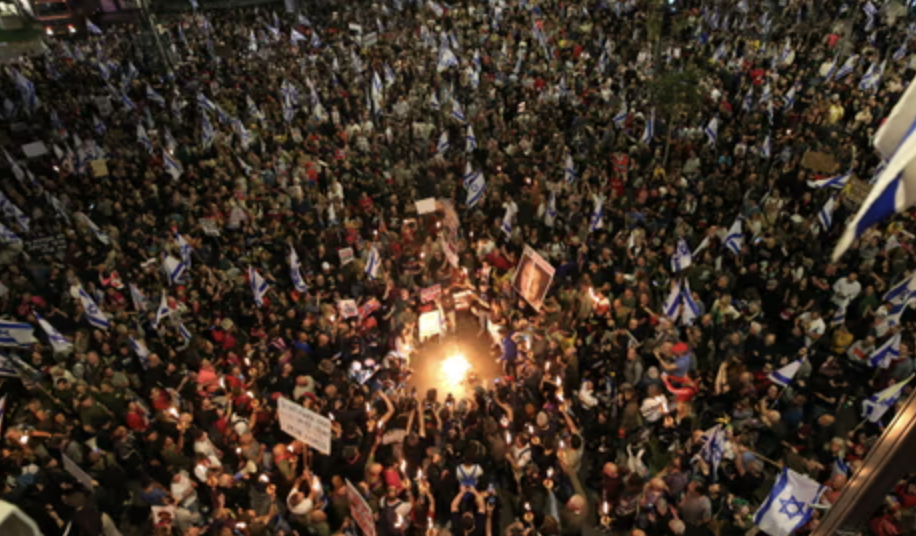The tensions in Israel have reached a boiling point as nationwide protests erupted over the prolonged conflict in Gaza. This surge in public demonstrations has not only underscored the deep-seated frustrations but also highlighted the urgent need for unity and resolution.
A Nation in Turmoil
As the Gaza conflict continues to unfold, thousands of Israelis have taken to the streets in a passionate outcry against the government’s handling of the situation. The growing unrest has seen citizens from all walks of life come together to voice their displeasure, calling for an immediate end to the violence and a more compassionate and strategic approach to peace.
Government Response
The Israeli government has faced mounting criticism for its military operations in Gaza, with many alleging that these actions have only served to exacerbate the conflict rather than resolve it. Prime Minister Benjamin Netanyahu, addressing the nation, emphasized the need for security and defense, stating, “Our priority is to safeguard our citizens from any threats.”
However, his remarks did little to quell the unrest. Protesters argue that the government’s policies have led to devastating humanitarian consequences for both Israelis and Palestinians. The stark contrast in opinion underscores the need for a comprehensive strategy that not only addresses security concerns but also promotes human rights and peacebuilding efforts.

Calls for Unity
In the midst of the turmoil, a prominent theme has emerged. Many protesters and thought leaders have urged for a collective effort to heal the nation’s divisions and work towards a lasting peace. The echoes of this sentiment were heard loud and clear in Tel Aviv, where a massive rally took place, bringing together individuals from different religious, ethnic, and political backgrounds.
“We may have our differences, but at the end of the day, we all want the same thing – a peaceful future for our children. It’s time to put aside our conflicts and stand united,” said Esther Levy, a social activist participating in the demonstration.
Steps Towards Reconciliation
Encouragingly, several initiatives have been proposed to bridge the gap between the divided communities:
- Dialogue forums bringing together leaders from both sides to discuss grievances and solutions
- Educational programs aimed at fostering understanding and tolerance among the youth
- Humanitarian aid partnerships to provide relief for those affected by the conflict
- Joint economic ventures to create shared prosperity and mutual dependence
These steps, while ambitious, highlight a clear path forward, suggesting that peace and unity, though challenging, are not beyond reach.
International Perspective
The international community has also weighed in on the protests, with global leaders calling for restraint and constructive dialogue. The United Nations has expressed concern over the humanitarian situation in Gaza and urged all parties to prioritize the safety and well-being of civilians.
“We stand in solidarity with those calling for peace and justice. It is imperative that both sides come to the table and negotiate a sustainable resolution to this enduring conflict,” said António Guterres, U.N. Secretary-General.
Hope on the Horizon
Amidst the chaos, there is a glimmer of hope. The widespread protests have shone a light on the collective yearning for peace and the readiness of the Israeli populace to envision a different, more harmonious future. The public outcry is a powerful reminder that the desire for unity and reconciliation can drive meaningful change.
As the Israeli nation navigates these turbulent times, one thing remains clear: the resolve to find common ground and build a future predicated on peace and unity is stronger than ever.
In the words of Rabindranath Tagore, “You can’t cross the sea merely by standing and staring at the water.” It is an endeavor of action, hope, and mutual respect. And most importantly, it is an endeavor that the people, through their fervent calls for unity, have indicated they are ready to undertake.